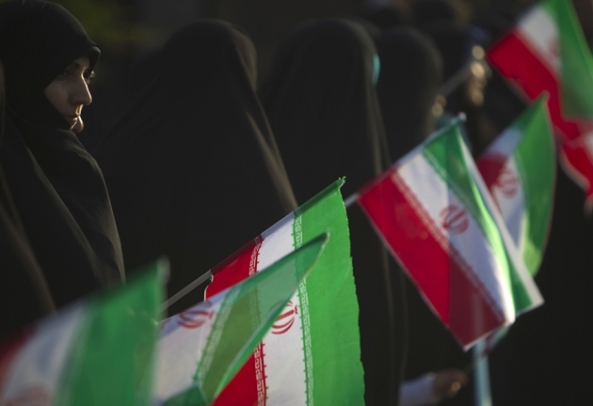
Excerpts from “Preparing for Regime Change in Iran,” Washington Institute for Near East Policy, available at Fikra Forum
“Maryam Rajavi, your endeavor to rid your people of the Khomeinist cancer is an historic epic that…will remain inscribed in the annals of history.” -His Royal Highness, Prince Turki Al Faisal
On July 9, 2016, I observed a rally in Paris at which Prince Turki of Saudi Arabia, former ambassador to the U.S. and intelligence chief but no longer in any official position, addressed Maryam Rajavi, President-Elect of the National Council of Resistance of Iran (NCRI). The Turki option — regime change in Iran — turned up the heat on Tehran. When the crowd chanted, “The people want regime change,” the Prince joined the crowd in Arabic saying, “I, too, want regime change” in Iran, a remark that brought the house down.
With some Arabs leading the call, various dissidents like the Mujahideen-e-Khalq (MEK) core of the NCRI are accelerating their calls for regime change in Iran. The Arab conflict with Iran has been mainly sectarian, but Turki sought to move the conflict to a strategic level with a greater focus on removing the “revolutionary” nature of Iran’s regime. With some support for the NCRI in the U.S. Congress, European national parliaments, and the European Parliament, it is time for the West to join this effort.
…
Georgetown University students and colleagues in the Iran Policy Committee conducted a study to assess the image of the NCRI and other Iranian dissident groups, including organizations not espousing regime change. Using the Islamic Republic News Agency (IRNA) for the period from January-December 2005, we performed a content analysis and determined the NCRI/MEK was the topic of discussion almost four time as often as all other dissident organizations combined.
We updated the 2005 study by using the large number of attacks by the IRGC or Iranian proxies against the NCRI. Again, the NCRI family of entities were targeted more than other rebellious minorities in Iran. In addition, the Iranian regime regularly sets up expositions throughout the country to convince Iranians to refrain from paying any attention to the NCRI.
If the regime were not so leery of the NCRI, they would hardly pay so much attention to it. Furthermore, Iran would not spend its political capital with foreign governments asking them to suppress the group or seek the destruction of Camp Ashraf/Liberty in Iraq, where MEK dissidents were confined in exile at Liberty until September 9, 2016.
…
The 2009 uprising showed that millions in Iran wanted regime change, a goal espoused by the NCRI, whose members paid a disproportionate price for participation. Some Arab governments are now lining up with Iranian dissidents because they perceive the revolutionary enemy regime at their doorstep. As the Prince attempts to redraw the arc of history, this is the time for the West to join the coalition that could shape the future.
——–
*** Other contributions of the author at The Washington Institute are available in Arabic at: http://bit.ly/2exfybj
*** Click here for the Arabic Word version of “Preparing for Regime Change in Iran”
Professor Raymond Tanter served on the U.S. National Security Council and as Personal Representative of the Secretary of Defense to arms control talks in the Reagan-Bush White House.

